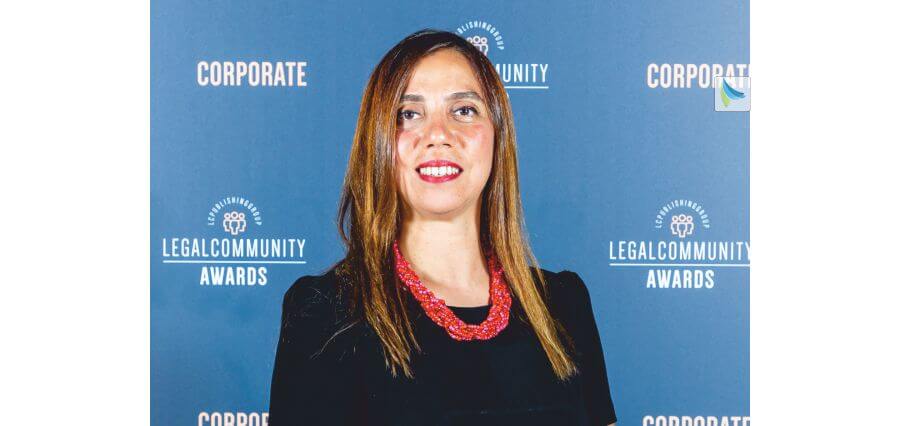These days, debt feels almost unavoidable with things like credit cards, student loans, and medical bills. Most Americans are stuck in cycles of missed payments, interest, and balances ballooning out of control. The average household has nearly $8,000 just in credit card debt. With total consumer debt now over $14 trillion in the US, it’s clear we need better ways to get a handle on debt.
The good news is, for those feeling overwhelmed, there are solutions. Strategies like credit counseling or debt consolidation can help you regain control. However, selecting the appropriate debt relief option for your situation is crucial. In this guide, we’ll explore common strategies, look at their impact, and offer tips to pick the ideal game plan for you.
Regarding credit card debt relief, the aim is to empower and inform you about tackling your debts. Let’s explore solutions together so you can relieve debt stress and get back on stable financial ground.
Identifying Your Debt Situation
Understanding the dynamics of debt within different age groups can provide valuable insights into financial habits and challenges. According to Experian’s research on average credit card debt by age, individuals’ debt burdens can vary significantly depending on their stage in life. This data can serve as a benchmark for evaluating one’s debt situation and planning for financial stability. Before pursuing debt relief, it’s necessary to fully understand your current debt obligations. This involves:

- Calculating your debt-to-income ratio: Divide your monthly debt payments by your monthly gross income. The ideal ratio is below 36%.
- Categorizing your debts:
- Secured debt like mortgages and auto loans where an asset is collateral.
- Unsecured debt like credit cards where you are personally liable.
- High-interest debt like credit cards vs. low-interest debt like federal student loans.
- Listing all debts from highest to lowest interest rate. This helps prioritize paying down the most costly debt first.
- Noting debts in good standing vs. those in collections. Debts in collections often require different strategies.
- Review your credit report from all three bureaus and your credit score. Aim for a score over 670. Take note of any errors to dispute.
- Summarizing total balances owed, minimum monthly payments, interest rates, and terms for each debt. This provides a complete picture.
- Understanding relevant factors about each debt like loan purpose, cosigners if applicable, and impacts of default such as wage garnishment or vehicle repossession.
This comprehensive debt audit illuminates the full magnitude of your situation, enabling you to determine the most impactful relief strategy.
Debt Relief Strategies and How They Work
While debt consolidation, debt settlement, credit counseling, and bankruptcy provide possible alternatives to bankruptcy and credit card debt relief, choosing the right strategy requires careful consideration of your specific financial circumstances.
Tailoring strategies to individual circumstances and financial goals, point break debt relief offers personalized assistance, empowering individuals to break free from the bonds of debt and embark on a journey toward financial freedom. With the right debt relief path, you can discover strategies to prevent future debt accumulation and achieve lasting financial freedom.
1. Debt Consolidation
Debt consolidation entails combining multiple high-interest debts into a single, lower-interest loan with one monthly payment.
How it works:
- Take out a debt consolidation loan from a bank, credit union, or online lender. Interest rates average around 9-12% for borrowers with good credit.
- Use the loan funds to pay off and close older credit card and personal loan accounts. This simplifies repayment into one monthly bill.
- Benefit from the lower interest rate on the consolidation loan, saving money compared to high credit card rates of 15-25%.
- Optionally transfer remaining balances on old cards to a 0% balance transfer card to further minimize interest.
- Commit to diligently paying off the consolidation loan balance within the intro 0% period on balance transfers, usually 12-18 months. Avoid running up balances on old cards once paid off.
Debt consolidation is best suited for borrowers with relatively good credit scores and multiple high-interest debts in good standing. This strategy can lower monthly payments, simplify repayment, and reduce the total interest paid. However, discipline is required to pay off the balance during the intro 0% APR period.
2. Debt Settlement
Debt settlement, also called debt negotiation or arbitration, involves working directly with creditors or collection agencies to settle on paying a smaller lump sum, often 30-50% lower than the total amount owed, to fully resolve the debt.
How it works:
- Hire a debt settlement company to negotiate on your behalf or learn DIY settlement techniques to arrange payoff deals on your own.
- Stop making payments to creditors so funds can be set aside in a dedicated settlement account to use for eventual negotiated payoffs.
- Creditors freeze interest and agree to take a reduced settlement payment in return for a quick payout and avoid the legal hassles of further collection efforts.
- Pay settlement funds to creditors from the dedicated account once sufficient savings are accumulated, closing accounts permanently.
- Receive documentation from creditors confirming the remaining balance is forgiven and the account is closed.
Debt settlement carries risks, including severe damage to credit scores and tax implications for forgiven balances. However, it can be an attractive option for unsecured debts you’re unable to pay in full.
3. Credit Counseling
Non-profit credit counseling agencies like the National Foundation for Credit Counseling offer free or low-cost consultations to construct a personalized debt management plan.
How it works:
- Meet with a certified credit counselor who reviews your full financial situation, including expenses, income, and debts.
- The counselor negotiates with all creditors to simplify repayment terms into one lower monthly payment with reduced interest rates.
- You make a single payment to the credit counseling agency each month, which distributes funds to creditors.
- By diligently following the debt management program, you can become debt free in 3-5 years while improving credit.
Credit counseling helps organize payments but doesn’t reduce principal balances. However, it provides education on budgeting and avoiding future debt. Counselors provide an impartial, non-profit perspective.
4. Bankruptcy
As an absolute last resort for those facing truly overwhelming, unmanageable debts, filing for personal bankruptcy can eliminate or restructure certain debts under court protection. The two primary options are:
Chapter 7 Bankruptcy – How it works:
- All assets are liquidated except for exemptions to pay creditors. This may include selling property.
- Qualifying debts like credit cards, medical bills, personal loans, and utilities are discharged completely.
- Debts that can’t be discharged include student loans, child support, alimony, and most taxes.
- Bankruptcy stays on credit history for 10 years, severely damaging scores and credit access.
Chapter 13 Bankruptcy – How it works:
- Establish a 3-5 year repayment plan under court supervision to pay creditors over time.
- Debt balances are not discharged but creditors are prevented from seizures, wage garnishment, and collections during the repayment period.
- Monthly payments are made to a bankruptcy trustee who distributes funds to creditors according to the repayment plan’s terms until debts are satisfied.
- Bankruptcy damages credit ratings for up to 10 years but less severely than previous.
While bankruptcy immediately halts collections activity, it severely impacts credit access and is not an easy fix. Weigh it carefully as a debt solution of last resort with guidance from bankruptcy attorneys.
Evaluating the Impact of Debt Relief on Credit Scores
An essential consideration when pursuing debt relief is how these strategies may affect your credit score both short and long-term. Here are typical impacts:
| Strategy | Immediate Impact | Long Term Impact |
| Debt Consolidation | Minimal impact if accounts in good standing | Rebuilt credit through on-time payments |
| Debt Settlement | Major damage from missed payments | Slow rebuild over several years |
| Credit Counseling | Mild damage from restructured accounts | Improved score through program discipline |
| Bankruptcy | Severe damage making new credit difficult | Very slow rebuild over 7-10 years |
To recover credit post-debt relief, maintaining low revolving credit utilization below 30%, disputing any errors on credit reports, limiting hard inquiries by new lenders, and consistently making on-time payments will all help. Avoiding new debt accumulation is also key.
Implementing a Debt Relief Strategy
Here are some tips I would highlight for putting a debt relief strategy into action:
- Consult financial, legal, and tax experts first to understand all options and impacts before committing. Get advice in writing.
- Choose the relief approach that best fits your specific debt situation and tolerance for credit damage. Set a 3-5 year goal to be debt-free.
- Read contracts fully and avoid any company pushing you to sign or pay upfront fees before settling debts. Lean on reputable non-profits if possible.
- Open a separate savings account and automate transfers to build up funds for debt payments if doing a settlement.
- Stick closely to repayment plan terms and timelines to maximize the benefits. Consistency is crucial.
- Track progress with a spreadsheet to celebrate milestones and stay motivated.
- Learn from past financial mistakes through budgeting programs and resources. Build financial skills.
With an organized approach and commitment, you can make real progress towards financial freedom from oppressive debt. Patience and discipline pave the way to success.
Preventing Future Debt Accumulation
Eliminating existing debt provides a vital reset. But long-term financial health requires changing behaviors to avoid debt cycles restarting. Critical prevention strategies include:
- Creating a budget tracking all income and spending. Budgeting apps make this easy. This allows for assessing true disposable income after essentials.
- Establishing an emergency fund with 3-6 months’ expenses. This provides a cushion for unplanned bills.
- Saving for major planned expenses before relying on credit.
- Limiting credit cards in your wallet to 2 cards maximum. Less temptation exists to overspend.
- Paying credit card balances in full each month to avoid high-interest charges. For large purchases, always pay over time, not just the minimum due.
- Analyze credit reports daily and debate errors immediately to increase credit scores.
Frequently Asked Questions
What is the difference between debt consolidation and debt settlement?
Debt consolidation combines debts into one new loan, while debt settlement negotiated payoff discounts with creditors. Consolidation maintains repayment, while settlement pauses payments.
How much does credit counseling cost?
Reputable non-profit credit counseling agencies often charge between $0-$50 for an initial consultation, after which monthly fees for debt management plans average $25-40.
What types of debt can be included in a debt management plan?
Most credit counseling programs can include unsecured debts like credit cards, medical bills, personal loans, and utility bills. Secured debts usually cannot be included.
How long does debt settlement take to complete?
The debt settlement process typically takes between 2-4 years to fully complete payoff negotiations with all creditors and become debt-free.
Will my creditors agree to settlements?
There is no guarantee creditors will accept a settlement offer, but they often agree to some discount to resolve the debt and avoid legal costs. Settlement success depends on negotiating skills.
What is the estimated cost of filing for bankruptcy?
The total costs of bankruptcy average $1,500-$3,000 including court filing fees, attorney fees, and mandatory credit counseling courses when filing individually.
How do I choose a reputable credit counseling agency?
Look for non-profit agencies accredited by the National Foundation for Credit Counseling or the Financial Counseling Association of America. Avoid any agency pushing debt relief products.
Does debt settlement affect my taxes?
If a creditor forgives or cancels over $600 in debt through settlement, the IRS may count this as taxable income on your Form 1099-C.
Is debt consolidation better for credit scores than debt settlement?
Yes, debt consolidation is less damaging to credit since accounts remain in good standing and repayment continues, while settlement pauses payment.
Can I be sued by creditors when doing debt settlement?
Creditors could sue if you become delinquent on debts enrolled in settlement. Lawsuits are less common in settlements, but the risk remains until accounts are closed.
Conclusion
Financial dilemmas stemming from overwhelming debt may seem hopeless. However, leveraging targeted relief strategies paired with prudent budgeting and money management empowers you to gain control of finances and build a secure future. With an informed approach, freedom from debt is possible.
The ideal debt solution depends on your specific liabilities, credit tolerances, and financial discipline. But no matter your circumstances, help is available. Follow the guidance in this article to understand your debt profile, evaluate relief options, and most importantly, take strategic steps to implement change today. You deserve a tomorrow unburdened by past debts.

















